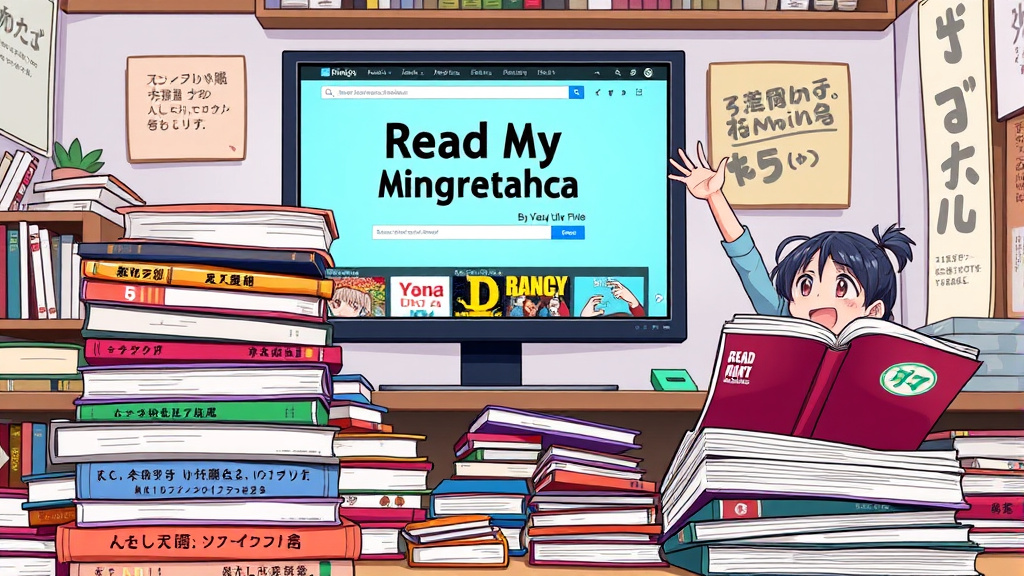The Enduring Appeal of Manga – Exploring Its Global Phenomenon and Cultural Impact
manga on encompasses a vast and diverse world of Japanese comic art that has captivated audiences worldwide. With its unique storytelling, artistic styles, and cultural nuances, manga continues to be a significant cultural phenomenon that transcends borders. This article delves into the multifaceted nature of manga, exploring its artistic qualities, historical journey, cultural significance, and its influence on global media and society.
The Enduring Appeal of Manga: Exploring Its Global Phenomenon
Manga’s appeal lies in its ability to resonate universally, blending imaginative storytelling with deeply rooted cultural elements. Its enduring popularity is fueled by a sense of escapism, relatable characters, and stories that span genres—ranging from action and romance to science fiction and horror. Fans worldwide gravitate toward manga for its authenticity and emotional depth, which allow readers to connect profoundly with characters and narratives, regardless of age or background.
Furthermore, manga’s accessibility through various formats, including print, digital, and anime adaptations, has helped solidify its global presence. The rise of online communities and international manga conventions amplifies this reach, creating a shared cultural space where enthusiasts discuss, critique, and celebrate manga on a daily basis. This interconnectedness fosters a vibrant, ongoing dialogue that sustains manga’s relevance across generations and cultures.
 Hình minh họa: manga on – online manga free sites
Hình minh họa: manga on – online manga free sitesManga as a Literary Art Form: Analysis of Narrative Techniques and Themes
Manga resembles a sophisticated literary art form owing to its innovative use of visual storytelling, pacing, and thematic exploration. Artists and writers employ techniques such as panel layouts, expressive character designs, and symbolic imagery to deepen narrative impact. Themes like resilience, identity, societal change, and moral ambiguity are woven into stories with nuance, inviting readers to contemplate complex issues beyond mere entertainment.
Several manga creators, like Osamu Tezuka and Naoki Urasawa, are celebrated for their masterful narrative craftsmanship that combines traditional storytelling with experimental styles. The combination of imagery and text creates a compelling synergy that elevates manga to a form of visual literature. This hybrid art form offers a rich, layered experience—where symbolism, allegory, and cultural references are intricately integrated, encouraging readers to interpret stories through multiple lenses.

Beyond Entertainment: The Educational and Cultural Significance of Manga
Manga functions not only as entertainment but also as an educational and cultural bridge. It introduces readers to Japanese customs, language nuances, historical contexts, and societal values amid captivating narratives. For non-Japanese audiences, manga provides an entry point into understanding Japanese culture in an engaging manner that textbooks often cannot replicate.
Moreover, manga often explores social issues such as mental health, environmental concerns, gender roles, and political tensions—serving as a mirror to contemporary society. This reflective quality makes manga a valuable tool for cultural exchange and dialogue. It nurtures empathy and awareness among diverse audiences, breaking down stereotypes and fostering a deeper appreciation for different perspectives.
Evolution of Manga: Tracing the History from Humble Beginnings to Modern Popularity
Tracing the history of manga reveals a fascinating evolution from traditional ukiyo-e prints and emakimono scrolls to modern digital comics. The post-World War II era marked a significant turning point, with artists like Osamu Tezuka pioneering styles that merged Western comic influences with Japanese storytelling traditions. The rise of manga magazines and serialized stories allowed the art form to flourish, capturing the imagination of a burgeoning audience.
As technology advanced, manga adapted to new formats, with digital publishing and webcomics broadening accessibility. The rise of global markets in the 21st century further propelled manga beyond Japan’s borders, fueling international fandom and translating works into numerous languages. The creative adaptability and cultural resonance of manga have ensured its survival and growth, reflecting societal changes and technological innovations over decades.
Manga and Anime: Examining the Symbiotic Relationship and Adaptation Process
The relationship between manga and anime is a prime example of a symbiotic media cycle that amplifies storytelling across formats. Many beloved anime series are adaptations of manga, providing visual and auditory dimensions that deepen the experience. Conversely, popular anime often boost manga sales, demonstrating their mutually reinforcing role in media ecosystems.
Adapting manga into anime involves significant creative challenges, including maintaining artistic integrity while adding motion, sound, and dynamic pacing. This process often results in expanded worldbuilding and character development, making stories more accessible to broader audiences. However, adaptation discrepancies can also occur, where anime diverges from manga plotlines, reflecting differing artistic visions. This interplay underscores how manga on can serve as a foundational narrative source and a springboard for multimedia expansion.
The Business of Manga: Analyzing the Publishing Industry and Global Market Trends
The manga industry operates as a complex global business, comprising publishers, distributors, and digital platforms that navigate shifting consumer preferences. Traditionally, manga magazines and print volumes dominated sales, but digital platforms and subscription models are now transforming the landscape. This shift increases accessibility and affordability, attracting younger generations and international readers.
Global market trends show rising demand in North America, Europe, and Southeast Asia, with localization efforts expanding manga’s reach. Major publishers like VIZ Media and Kodansha leverage online distribution, manga apps, and merchandise to capitalize on this growth. Challenges persist around piracy and translation quality, but innovations in digital rights management and regional licensing help sustain industry profitability. Overall, the manga business exemplifies adaptability in a rapidly changing global entertainment market.
Influence of Manga on Western Comics and Culture: A Cross-Cultural Examination
Manga’s influence on Western comics and popular culture is undeniable, fueling creative cross-pollination and innovation. Artists like Frank Miller and Brian Lee O’Malley cite manga as inspiration for their work, integrating visual styles, storytelling conventions, and thematic depth. Manga’s pacing, paneling, and character archetypes have permeated Western comic book aesthetics, encouraging new storytelling techniques.
This cross-cultural exchange has also led to a broader acceptance of manga themes—such as complex protagonists and morally ambiguous narratives—within Western media. Conversely, manga has embraced Western genres like horror, Western-style superhero stories, and science fiction, creating hybrid narratives that appeal across audiences. This cultural interchange fosters a global conversation about storytelling craft and enriches both traditions, illustrating manga on as a catalyst for artistic evolution worldwide.
Diversity in Manga: Representing Different Genres, Characters, and Perspectives
The diversity in manga’s genres and characters reflects a broad spectrum of human experience and cultural expression. From slice-of-life stories portraying everyday struggles to fantasy epics with elaborate worlds, manga on exemplifies variety. This inclusivity extends to representation—featuring characters of different genders, sexualities, races, and abilities—challenging stereotypes and promoting social acceptance.
In recent years, creators have increasingly prioritized authentic representation, giving voice to marginalized communities. Such diversity not only enriches storytelling but also paves the way for readers to identify with characters, fostering empathy and understanding. Manga’s flexibility as a medium makes it a powerful platform for exploring complex identities and perspectives, ultimately contributing to a more inclusive cultural landscape.
The Future of Manga: Predictions and Trends in Content, Technology, and Accessibility
Looking ahead, the future of manga promises further innovation driven by technological advancements. Augmented reality (AR), virtual reality (VR), and AI-powered tools could revolutionize how manga is created, consumed, and interacted with. Interactive manga experiences and personalized content may become more prevalent, catering to individual preferences and expanding the boundaries of storytelling.
In terms of content, trends suggest greater diversity in genres, themes, and storytelling techniques, reflecting societal shifts and global influences. Accessibility will continue to improve through multilingual translations, mobile platforms, and subscription models, making manga more reachable than ever. Additionally, the rise of indie creators and webcomics democratizes the industry, allowing fresh voices to thrive. The future of manga on will likely be characterized by technological innovation, cultural inclusivity, and a continued blending of art forms.
Manga for Beginners: A Guide to Understanding and Appreciating the Art Form
For those new to manga, understanding its unique language requires patience and curiosity. Beginning with popular titles across genres allows newcomers to grasp diverse storytelling styles and artistic nuances. Recognizing common conventions—such as panel flow, character archetypes, and genre-specific tropes—helps deepen appreciation and comprehension.
Engaging with fan communities, translations, and critical reviews can broaden perspective and provide insight into cultural contexts. Studying different artist techniques and thematic explorations enriches understanding. Ultimately, appreciating manga on involves embracing both its artistic complexity and cultural richness, making it a rewarding journey into a vibrant art form that has captivated millions globally.
Conclusion
Manga stands as a dynamic and influential art form that combines visual innovation, storytelling depth, and cultural significance to captivate audiences worldwide. Its evolution from traditional Japanese art to a global multimedia phenomenon reflects a remarkable adaptability and cross-cultural resonance. As it influences Western comics and continues to diversify in genre and perspective, manga remains a powerful vehicle for entertainment, education, and cultural exchange. Looking toward the future, technological advancements and inclusivity promise exciting possibilities for manga on, ensuring its enduring relevance and appeal for generations to come.



